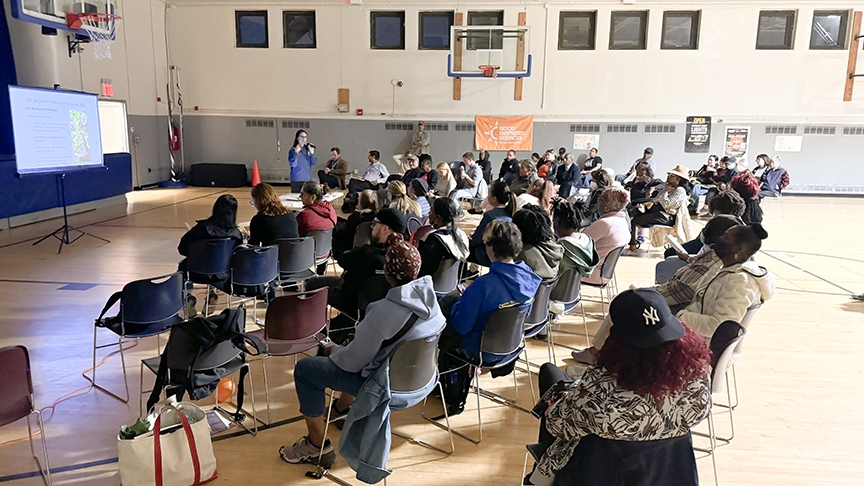Councilmember Alexa Aviles hosted a Town Hall last month to talk about construction at the Red Hook Houses.
“We have not had a meeting about all this construction in a long time,” Aviles said. “I thought it was going to be important that we have NYCHA come tonight and not only give you the update from their perspective but to also respond to your questions because you live here.”
Joy Sinderbrand, who manages NYCHA Capital Programs, led the discussion.
In December of 2015, after the devastation of Superstorm Sandy in 2012, NYCHA received access to the largest grant in FEMA history at the time, which totaled about $3.3 billion.
The work has included back up power generators, heat and hot water system, finishing the roof replacement work of every residential building, new carpets, basement flood proofing and temporary boilers in the buildings. The project’s many “lily pads” offers a landscape solution for flood protection. These are areas of refuge next to buildings so that when there is flooding people will have a place to come out of the building.
These lily pad areas have seating areas along with tables with checkers and chess boards. They are designed to be specific to the buildings they are next to as the areas are different heights due to the flood risk of a particular building.
Sinderbrand spoke about trees, since that was a big concern of residents. Over 400 trees had to be removed prior to all the construction.
There will be a total of 481 new trees, which will be planted starting in the spring since planting season is over for this year. Half of the trees planted will be smaller trees, which are taller than a person.
“We want to give it the best chance of taking root and being healthy,” Sinderbrand said.
Many people have inquired about why there is so much fencing that has been up for a long time around the complex.
“The Department of Buildings would not let us take the fences down until local law repairs were done on the buildings as well,” Sinderbrand said. “We had to make sure that all the facade repairs for the most recent local law cycle were done before we took the fences down.”
Ross Joy, manager of the housing resource center at the Red Hook Justice Center brought up concerns that the community has about the project.
“These past six years of this retrofit construction have been as bad if not worse of a disaster for our community than Sandy.”
“We are in year six of construction,” Joy added. “Why are the basements still not fixed. The incinerators do not work. What was missing from this presentation was when an end time is.”
He added that a presentation was given at the Justice Center last year that said the project would be done the end of this year and that is not happening. He asked for a date and time for when the construction would be complete.
Sindebard could not give a specific end date for the construction. She gave as an example that NYCHA digs up ground and finds unexpected things that need to be repaired.
“We have to secure the funding and make sure we repair before we close up the dirt,” Sinderbrand said. “That has happened multiple times in Red Hook.”
Vanessa McKnight talked about all of the increased scaffolding and the fact that she has not been able to open her windows because of the smell.
Sidebard said some improvements have to wait until planting season in the spring, which is why the project will not be finished until hopefully 2025.
She added that their schedule was delayed due to the pandemic. They did not want to do water outages or some other types of work that would have disrupted when people were sheltering in place.









